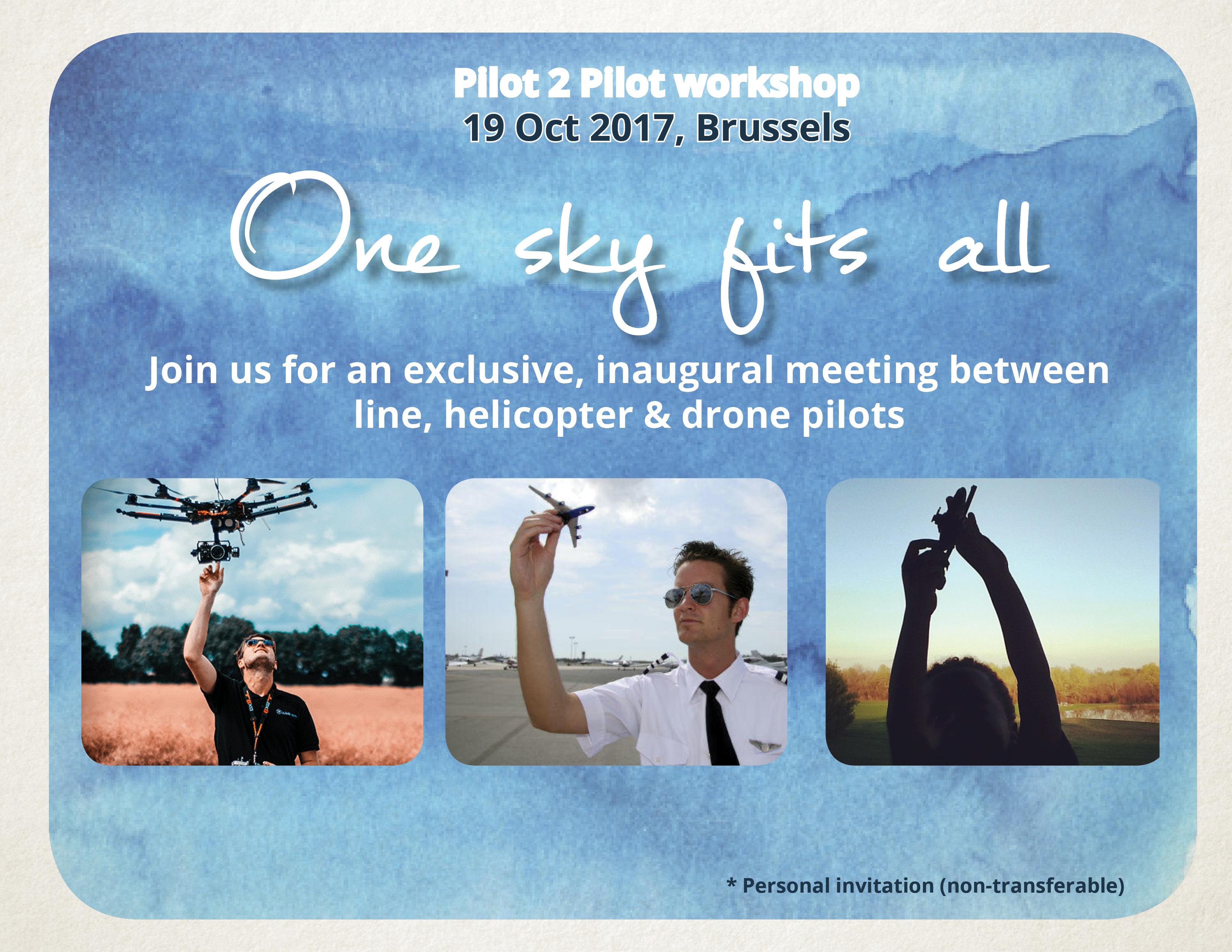

Drone, airline & helicopter pilots have much more in common than just the same airspace. This was the main conclusion of the first workshop for manned & unmanned aviation pilots, organised by the European Cockpit Association in Brussels on 19 Oct. Under the common theme “One sky fits all”, more than 20 aviators reflected on their common passion for flying, similar operational threats, challenges and comparable trends in their profession.
“We all fly different aircraft, but the job of the pilot is essentially the same”, says ECA Vice-President Jon Horne. “Today we’ve heard the striking similarities between piloting an aircraft, whether ‘from the inside’ or ‘from the outside’. In both cases pilots do meticulous pre-flight preparations, assess the environment and focus on ensuring and executing a safe flight. Ultimately, the Pilot in Command’s role is the same regardless of aircraft: managing risk & controlling the aircraft safely.”
The workshop featured presentations by drone, helicopter and airline pilots detailing the operational reality of their work. A second focus was on abnormal and emergency situation training and procedures. The workshop ended with a brainstorming session where pilots identified how to learn from each other’s various techniques and solutions to their common problems.
“Listening to the drone pilots’ presentations I was struck by the fact that they have come to the same solutions that manned aviation is using. For example, the 2-person operation – one pilot in command, flying the aircraft and ensuring its safe conduct, and one pilot/operator communicating and monitoring”, says ECA Board Director Capt. Johan Glantz. “But beyond this example, the workshop clearly demonstrated that we do share the same set of professional standards and core responsibilities.”
Building a safety culture was identified as a common challenge for all. While manned aviation prides itself on a robust and positive safety culture, it needs constant effort to maintain. Key to this is developing an incident reporting and analysis system that would allow drone pilots to learn from others’ experiences.
“The professional drone pilots clearly showed that they understand the benefit of and need for a genuine positive safety culture, and one which protects against undue commercial or public pressure. This mind-set is in line with manned aviation’s pilots, and we face very similar challenges in delivering this key foundation of safe aviation” says Capt. Glantz.
Drone pilots also highlighted other challenges from regulators. National authorities have not yet assigned the necessary resources to develop and offer valuable, relevant and portable training qualifications for professional drone pilots. Meanwhile national regulation still varies wildly around Europe, making it hard for professional drone pilots to work in more than one country.
“Ten years ago, when the first RPAS regulatory initiatives kicked off, manned aviation had little understanding of RPAS – it all seemed a technology which had nothing to do with us”, says Capt. Horne. “Over the past 5 years, we have made a great shift to realise that unmanned flying is the future of flying. We may not know whether in the next 5, 10 or 20 years, but it is the future. This first workshop is an important step on the path of all pilots in accompanying the convergence of manned and unmanned aviation. I am confident our profession will greatly benefit as we learn from each other”.
Under the common theme “One sky fits all”, more than 20 aviators reflected on their common passion for flying, similar operational threats, challenges and comparable trends in their profession.
